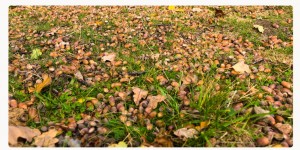If You Own Cattle, Watch Out for Those Acorns!
go.ncsu.edu/readext?318139
en Español / em Português
El inglés es el idioma de control de esta página. En la medida en que haya algún conflicto entre la traducción al inglés y la traducción, el inglés prevalece.
Al hacer clic en el enlace de traducción se activa un servicio de traducción gratuito para convertir la página al español. Al igual que con cualquier traducción por Internet, la conversión no es sensible al contexto y puede que no traduzca el texto en su significado original. NC State Extension no garantiza la exactitud del texto traducido. Por favor, tenga en cuenta que algunas aplicaciones y/o servicios pueden no funcionar como se espera cuando se traducen.
Português
Inglês é o idioma de controle desta página. Na medida que haja algum conflito entre o texto original em Inglês e a tradução, o Inglês prevalece.
Ao clicar no link de tradução, um serviço gratuito de tradução será ativado para converter a página para o Português. Como em qualquer tradução pela internet, a conversão não é sensivel ao contexto e pode não ocorrer a tradução para o significado orginal. O serviço de Extensão da Carolina do Norte (NC State Extension) não garante a exatidão do texto traduzido. Por favor, observe que algumas funções ou serviços podem não funcionar como esperado após a tradução.
English
English is the controlling language of this page. To the extent there is any conflict between the English text and the translation, English controls.
Clicking on the translation link activates a free translation service to convert the page to Spanish. As with any Internet translation, the conversion is not context-sensitive and may not translate the text to its original meaning. NC State Extension does not guarantee the accuracy of the translated text. Please note that some applications and/or services may not function as expected when translated.
Collapse ▲I know there are many people out there, like myself, who enjoy the cooler temperatures of fall. Even the livestock in the fields and pastures enjoy the annual escape from the oppressive summer heat. But with the cooling of the season, there are a few dangers for our pasture animals that need to be avoided.
Acorns are plentiful in Wilkes County this year. While this is good for wildlife, where cattle are frequently grazed on pastures that may contain oak timber, the possibility exists for cattle to also consume acorns. Most species of North American oak trees are considered toxic. If these acorns are over-consumed, they have the potential for fatal poisoning. The toxic compound in acorns is related to tannic acid, and is thought to be a gallotannin (or possibly a metabolite). One mystery is why cattle can be poisoned. Hogs, deer and squirrels seem to shell acorns and because the toxin is concentrated in the shell, this may explain their resistance to poisoning. They may also learn (or maybe naturally select) to not eat too many.
pastures that may contain oak timber, the possibility exists for cattle to also consume acorns. Most species of North American oak trees are considered toxic. If these acorns are over-consumed, they have the potential for fatal poisoning. The toxic compound in acorns is related to tannic acid, and is thought to be a gallotannin (or possibly a metabolite). One mystery is why cattle can be poisoned. Hogs, deer and squirrels seem to shell acorns and because the toxin is concentrated in the shell, this may explain their resistance to poisoning. They may also learn (or maybe naturally select) to not eat too many.
Typically acorns are not a favorite food for most cattle. If they have plenty of pasture to graze, acorn toxicity is usually not a problem. However, sometimes there is a cow that, for whatever reason, just seems to love acorns and will gorge themselves on them. Some cattle can apparently eat acorns with no ill effect, while others develop kidney and digestive problems that can lead to death. Generally, cows and large calves will be directly affected, but baby calves also appear to be affected through the milk and possibly before birth. Brood cows consuming acorns during the second trimester of pregnancy have the chance of malformed calves. Acorns can also cause agalactia (no or little milk) in fall calving cows. Affected cattle will first show signs of constipation, followed by an abnormally (dark or yellowish) colored thick diarrhea, sometimes with blood. Clinical signs of illness occur several days after consumption of large quantities of acorns in the fall. Most cattle that have the advanced gastrointestinal problems will lose condition rapidly, and have a gaunt, rough, “humped up” appearance with a diarrhea stained tail and rump. In mild cases, gastrointestinal distress may be the only result, and the affected animals will sometimes recover. In severe cases, kidney damage (tubular necrosis) occurs, and animals can die within several days.
The best way to prevent acorn poisoning is to keep cattle away from acorns. If pastures contain a substantial number of oaks, the trees should either be removed or cattle fenced out, but if you fence off an area covered with acorns, you may have to leave the fence up for a while. Acorns retain high levels of tannic acid for several months. An alternative would be to set up a management program that will keep cattle off those pastures from the time acorns start to fall, until several weeks after the leaves have fallen. There is also a grain/protein based supplement containing 10% calcium hydroxide (hydrated lime) that has helped in some situations, but not in others, and probably should not be an alternative to designing a program to keep cattle from eating acorns.




